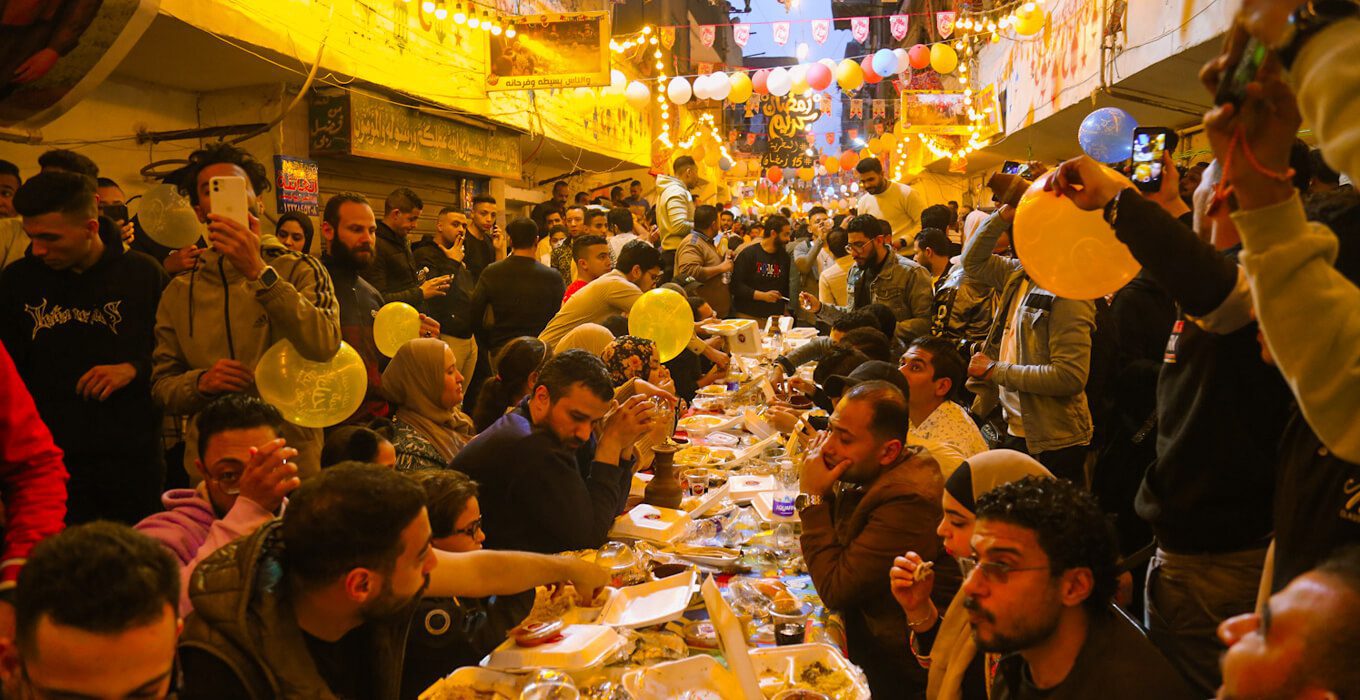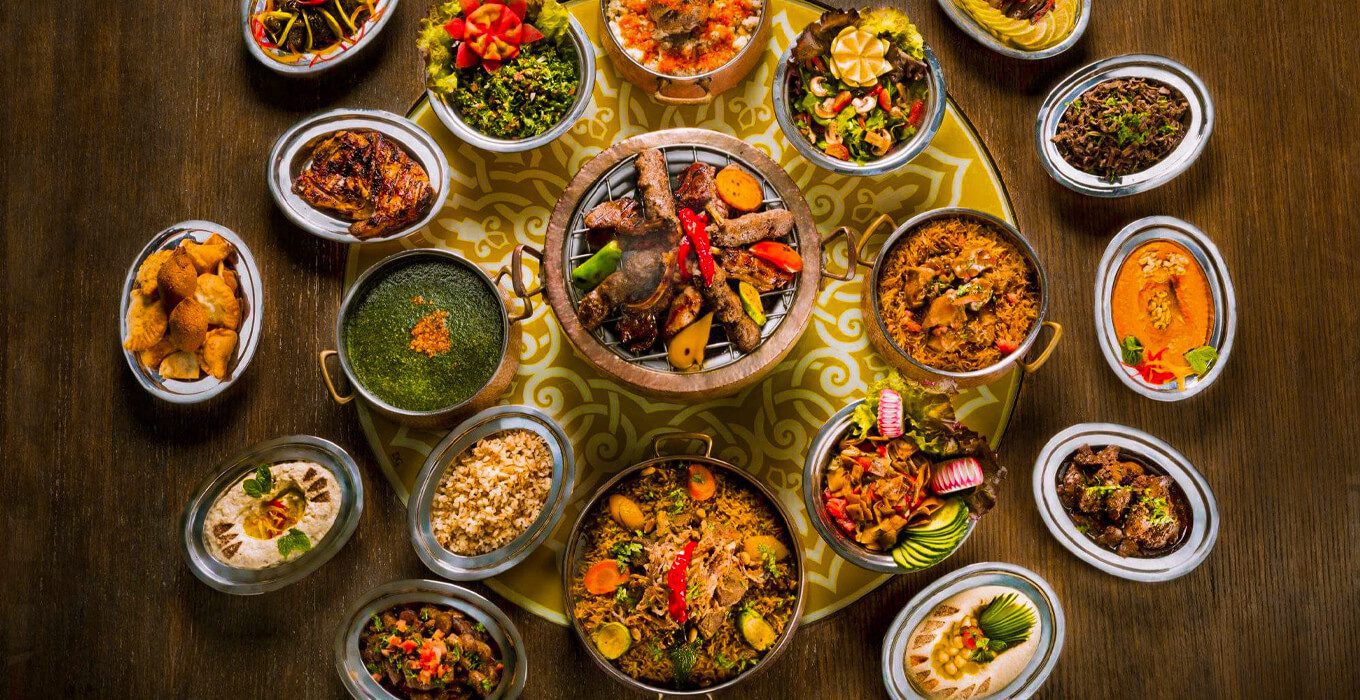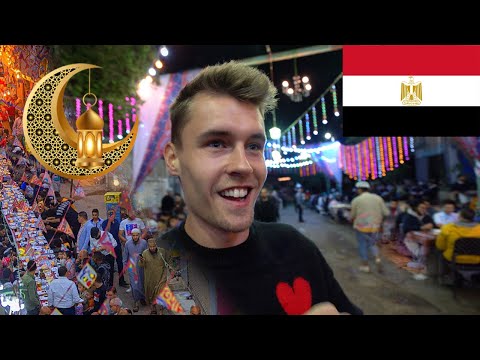Are you curious about Ramadan in Egypt in 2025? This holy month is a time of deep tradition and culture. It’s a journey into the heart of the Arab world, beyond what you might know.
Ramadan is the ninth month of the Islamic calendar. It’s a time for fasting, prayer, and coming together. In Egypt, Ramadan is special. It’s a mix of spiritual moments, festive gatherings, and delicious food.
So, what makes Ramadan in Egypt unique? And how can you experience it as a traveler? Let’s dive into the hidden treasures and find out.
Key Takeaways
- Gain an in-depth understanding of Ramadan’s significance in Egypt and its impact on daily life and traditions.
- Discover the vibrant street decorations, communal Iftar gatherings, and the unique Ramadan lantern-making culture that makes this festival so visually striking.
- Explore the rich tapestry of Egyptian cuisine, from the savory Iftar meals to the indulgent Suhoor delicacies, and how they bring the community together.
- Uncover the captivating Ramadan entertainment scene, from the television series marathons to the football tournaments that unite Egyptians in celebration.
- Learn about the etiquette and customs to ensure a respectful and enriching experience during your visit to Egypt during Ramadan.
Take advantage of our discounted offers with the following All-Inclusive Vacations to Egypt:
- 7-Day Cairo with Nile Cruise Tour Package Get -100 USD
- 8 Days Cairo with 3 Nights Nile Cruise by Flight Get 10% Off + Free Activities
- 8 Days Cairo and Nile Cruise Holidays with Abu Simbel Get 7% OFF
- 10-Day Cairo, Alexandria, and Nile Cruise with Abu Simbel by Flight Get 10% OFF
- 12-Day Cairo City & Nile Cruise and Hurghada City
Understanding Ramadan in Egypt
Ramadan is a sacred month for Muslims in Egypt. It’s a time for extra prayers, reading the Quran, and helping others. The month ends with Eid al-Fitr, a celebration of joy, prayer, and gifts.
What is Ramadan?
Ramadan is a key part of Islam, along with four other pillars. Muslims fast from dawn to sunset, not eating or drinking. Iftar, the breaking of fast, is a time of joy and sharing food.
The Significance of Ramadan in Egypt
Ramadan is deeply meaningful for Muslims in Egypt. The streets are filled with lights and decorations, especially around places like the El-Hussein Mosque and the Khan El-Khalili Bazaar. Street entertainment has been a tradition since the Eighth Century.
Eid Al Fitr is a three-day feast at the end of Ramadan. It’s a time for new clothes, going out, and spending time with loved ones. This celebration shows the importance of Ramadan in Egyptian culture and the bond between faith, community, and family.
|
Ramadan 2024 in Egypt |
Dates |
|
Start Date |
Sunday, March 10th |
|
End Date |
Tuesday, April 9th |
Ramadan in Egypt: A Cultural Immersion
As Ramadan nears, Egypt’s streets burst with life. The iconic Ramadan lanterns, or “fanous,” light up homes and public areas. These lanterns welcome guests, a tradition that started with Fatimid Caliph Moezz El-Din El Allah.
Decorations add to the festive mood, making cities warm and welcoming. Families gather to cook traditional dishes for Iftar. They share these meals with friends and neighbors, fostering a sense of community.
Communal Iftar Gatherings and Traditions
During Ramadan, Egyptians show their generosity by inviting the poor to Iftar. This act of kindness brings people together, creating a sense of unity and compassion. It’s a time when strangers become friends.
The Ramadan lanterns and Iftar traditions highlight Egypt’s rich culture. They show the country’s deep-rooted customs and hospitality during this special month.
Ramadan Festivities in Cairo and Beyond
When Ramadan arrives in Egypt, Cairo’s streets buzz with life. The “mesharati,” Ramadan drummers, are a key part of this. They wake the city before dawn with their drums.
Mesaharaty: The Ramadan Drummers
The mesharati tradition dates back to the Ottoman era. It’s a reminder of Ramadan’s spiritual importance. Drummers wear traditional clothes and play in the streets, waking people for suhoor.
Their music fills the air, bringing people together. It’s a moment of community and shared tradition.
Cannon-Firing Ceremonies and the Spirit of Celebration
Cannon fire marks the end of fasting and the start of Iftar. This tradition is found in many African countries. It’s a powerful symbol of celebration and tradition.
The sound of cannons signals the end of fasting. It calls people to gather for Iftar with family and friends.
These customs, from drummers to cannon fire, show the beauty of ramadan celebrations cairo. They highlight the egyptian ramadan traditions and ramadan charity egypt. Ramadan in Egypt is a unique and memorable experience for all.

Exploring Egyptian Cuisine During Ramadan
The holy month of Ramadan brings out the best in Egyptian cuisine. With its rich history and diverse flavors, Egyptian food is a feast for the senses. It showcases the country’s cultural heritage through Egyptian Dishes like Molokheya and Fattah, and sweet treats for Iftar.
Traditional Iftar Meals and Delicacies
When the sun sets, families gather for Iftar. The table is filled with traditional dishes that bring everyone together. Egyptian sweets ramadan like Konafa and Qatayef are favorites. They satisfy everyone’s sweet tooth.
Savory dishes like Ful Medames and Taameya (Egyptian Falafel) are also big hits. Hearty stews like Molokheya and Fattah round out the meal. They provide a satisfying end to the day’s fast.
Suhoor: The Pre-Dawn Meal
Suhoor, the pre-dawn meal, is key in ramadan in cairo and ramadan in alexandria. It’s a nutritious meal that helps people fast throughout the day. In Egypt, Suhoor includes Ful Medames, Taameya (Egyptian Falafel), and more.
These dishes give energy and reflect Egypt’s cultural heritage. They are part of the suhoor egypt and egyptian ramadan cuisine traditions.
Whether at Iftar or Suhoor, Ramadan in Egypt is a unique experience. It offers a deep dive into Egyptian culture. It’s a journey that visitors and locals will never forget.
Ramadan in Egypt: Cultural Events and Entertainment
In Egypt, Ramadan brings out the best in culture and traditions. The month is filled with entertainment and community spirit. From new TV shows to football tournaments, it’s a unique look at Egypt’s rich culture.
Television Series Marathons and Advertising Frenzy
The TV industry in Egypt comes alive during Ramadan in Egypt. Fans wait for new series and soap operas. Advertisers also jump in, trying to grab viewers’ attention with their ads.
Football Tournaments and Community Engagement
Football is huge in Egypt, especially during Ramadan celebrations. Kids and teens form teams and compete in tournaments. These events bring people together, showing the spirit of Ramadan in Egypt.
|
Ramadan Traditions |
Description |
|
Fanoos Ramadan (Ramadan Lantern) |
A distinct Egyptian tradition, the Ramadan Lantern is a symbol of the holy month, decorating streets and homes. |
|
Mesharati (Ramadan Drummers) |
Drummers who tour the streets each morning during Ramadan to wake people up for their pre-dawn meal (Suhoor). |
|
Cannon-Firing Ceremonies |
The firing of a cannon from atop the Citadel marks the time to break the fast at sunset during Ramadan. |
Ramadan in Egypt is a mix of TV shows, football, and cultural traditions. It’s a time of entertainment and community that draws in both locals and visitors.
Ramadan in Egypt Traditions and Etiquette
Visiting Egypt during Ramadan is a unique experience. It lets you dive into the local culture. But, it’s important to respect the customs and feelings of the people.
Egyptians fast and reflect deeply during Ramadan. Travelers should understand the traditions that make this month special.
Respecting Local Customs and Sensitivities
Knowing the cultural norms is key during Ramadan in Egypt. Don’t eat, drink, or smoke in public during the day. It’s seen as rude to those fasting.
Also, dressing modestly is a sign of respect. It shows you value the religious time. And, keep the noise down to maintain the peaceful vibe.
- Refrain from eating, drinking, or smoking in public during daylight hours
- Dress modestly and cover up to show respect for the religious observance
- Avoid loud music or boisterous behavior that could disrupt the serene atmosphere
By being considerate, visitors to Egypt during Ramadan can truly experience the month’s traditions. They’ll also appreciate the local way of life more.

Visiting Egypt During Ramadan
Visiting Egypt during Ramadan is a special chance to dive into the country’s deep cultural traditions. Some services might have different hours or be less available. But, Egypt’s famous sights like the pyramids, temples, and museums are open for you to see.
Attractions and Tour Adjustments
When you visit Egypt in Ramadan, it’s smart to book your stay and tours early, especially when lots of people are traveling. Egypt’s main attractions might have different hours, so check and confirm before you go. Also, public transport like buses and trains might run less often, so you’ll need to plan your trip differently.
Embracing the Spirit of Hospitality
Visiting Egypt in Ramadan lets you see the country’s lively culture and traditions up close. The air is filled with spirituality, and Egyptians are known for their friendly welcome. You might get to join Iftar gatherings, where people share meals and bond together after fasting.
Even with some services limited, Egypt’s traditions and attractions are still open to visitors. With good planning and a willingness to learn, your trip can be unforgettable and very enriching.

Planning Your Ramadan in Egypt Experience
Visiting Egypt during Ramadan is a unique and memorable adventure. You’ll get to dive into the lively traditions and celebrations of this sacred month. To fully enjoy your Ramadan in Egypt trip, plan carefully.
Best Time to Visit and Top Destinations
The latter part of the Ramadan 2025 Egypt calendar is the best time to see the festivities. The streets are filled with decorations, and there are big Iftar gatherings. Cairo, Alexandria, and Luxor are top spots to see the Egypt traditions in full swing.
Engaging with Local Communities
Visiting Egypt during Ramadan lets you connect with locals and learn about their culture. Join Iftar gatherings, help out at meals, or volunteer for good causes. This way, you’ll feel part of the community and truly understand Ramadan in Egypt.
“The best way to experience Egypt during Ramadan is to fully embrace the traditions and engage with the local community. This will not only enrich your travel experience but also deepen your appreciation for the vibrant culture.”
Conclusion
Visiting Egypt during Ramadan is a special experience. It combines cultural richness with spiritual depth. Travelers get to see the lively atmosphere and join in the local traditions.
Whether you love food, decorations, or religious events, Egypt in Ramadan is a journey to remember. It’s a chance to dive into the heart of an ancient civilization.
When planning your trip, be sure to respect local customs. This way, you can fully enjoy the spirit of Ramadan. You’ll also understand the importance of this time and connect with the people.
Exploring Egypt during Ramadan is a unique adventure. It mixes old traditions with modern celebrations and deep spirituality. By embracing Ramadan, you’ll see a side of Egypt that goes beyond the usual tourist spots.
This experience will leave you with unforgettable memories. You’ll also gain a deeper appreciation for Egypt’s rich culture.


